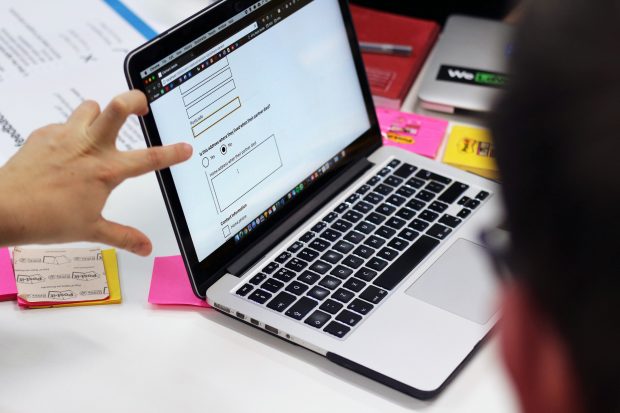
The team on GOV.UK is working to make it easier for users to find the information they need on the site. That’s why we’ve developed a topic-based taxonomy for the site and used supervised machine learning to tag content to this taxonomy.
This means content on the site can now be divided into broad topics like ‘transport’, ‘education’, and ‘entering and staying in the UK’.
GDS has worked closely with departments throughout this process, to make sure the taxonomy meets user needs and to make sure the content is as good as it can be.
Here’s how GDS helped the Home Office’s UK Visas and Immigration team (UKVI) with research on their taxonomy.
Starting the work
The UKVI team are the primary voice of authority for services and information for visas and immigration.
The team at GDS wanted to work closely with the UKVI team to fully understand their user groups, user needs and common problems. To start the project, we held a workshop with GDS, UKVI and the Home Office to identify what these were.
Kicking off this project with a workshop was a useful way to start engagement – to make sure that everyone from all 3 organisations was equally involved.
The research process
Once we’d started the project, our next step was to hold the first round of research – a series of contextual interviews.
These interviews told us about the motivations users had, as well as the types of problems they were having with UKVI services on GOV.UK.
These insights were combined with findings from previous GDS research, as well as results UKVI had from past sessions. They also allowed us to learn the words our users use – a necessity for this project.
We then moved on to remote tree testing. We did this by asking users to tell us where they would look for answers in given labels in tree testing.
We could then get rid of categories in the taxonomy that were performing well, and identify those that weren’t. And following that, we could test those with users to find out why they weren’t working.
And finally, we conducted a survey to discover what top tasks were relevant to the topic.
Working together to recruit research participants
We found throughout the process that it takes a long time to find research participants.
Our research plan was ambitious in scope and timing, so we knew recruiters would struggle with our deadlines. There was also a cost implication – using recruiters costs more.
This is where close collaboration became beneficial.
We got in touch with the UKVI customer insight team to ask if they could help us find participants. They gave us a list of 300 people who represented typical UKVI users. Out of those, 54 agreed to be participants and successfully completed a task, which is a really good completion rate.
Getting this data saved us a lot of time and money, and meant we could stick to our tight deadlines.
The top tasks survey
We needed some 400 participants for our next round of research – a survey to discover top tasks. Once more, the customer insight team came to our aid. They emailed 1,000 UKVI customers worldwide, inviting them to take part in research; 120 people completed the survey. This was enough to close the gap of missing responses and bring in the results.
Building a sustainable relationship
The relationship built during this project helped the GDS team access data and information, get specialist advice, and recruit research participants. This resulted in a better-quality project, fewer mistakes, and saved time and money.
This collaboration was a good opportunity for the GDS team to share findings from top tasks and the taxonomy project with UKVI, who used insights to enhance their knowledge base about their users.And we will continue to work together.We will repeat the top tasks survey each year, which will benefit UKVI by letting them know how various services are performing on GOV.UK.
UKVI and the Home Office also found contacts at GDS to work on other projects that needed support from different GDS teams. It also gave the opportunity for researchers from both departments to talk about their research methods, approaches and tools.
Following the project, UKVI is also considering how to use the GOV.UK platform to survey its users as well as improve its customer satisfaction survey.